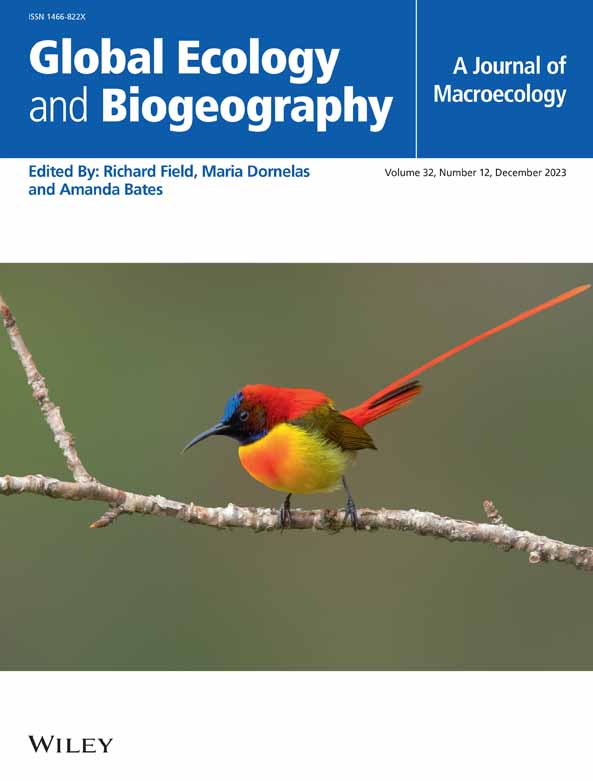Nonnative Species Richness and Dominance Reveal Differing Support for Invasion Theory at a Continental Extent
Abstract
Aim
Empirical tests of conceptual hypotheses describing species invasions often differ depending on the spatial scale (spatial resolution and extent of study area) at which they were conducted. Some of this disparity may arise from tradeoffs in data quality necessitating the use of different indices of community invadedness among scales. Local-scale studies typically use fine-resolution, descriptive measures of community invadedness (‘dominance’, the proportion nonnative individuals) at limited spatial extents, while macroscale studies often aggregate datasets to cover large spatial extents but use coarser spatial resolution and less descriptive indices (nonnative species richness). We investigated the consequences of using different indices to represent community invadedness at different spatial scales, and explored the implications for hypothesis testing when nonnative richness and dominance are not related.
Location
23,793 stream segments within 17 regional watersheds, conterminous United States.
Time Period
2000–2023.
Major Taxa Studied
Freshwater fishes.
Methods
Using a large-extent, fine-resolution dataset, we evaluated the correlation between nonnative species richness and dominance in communities, and compared empirical support for prominent invasion hypotheses (biotic resistance, disturbance facilitation) in identical Bayesian hierarchical models with community invadedness represented by each metric.
Results
Nonnative richness and dominance were weakly correlated, allowing us to classify communities into four archetypes based on relationships between the two indices. Empirical support for both invasion hypotheses differed between the two indices of community invadedness both overall and within regional watersheds.
Main Conclusions
Nonnative species richness and dominance describe different facets of the invasion process and may under- or over-represent community invadedness when considered alone. Empirical disparity between models estimating the two metrics may be an important source of scale-dependent inference in invasion ecology. When assembling datasets for macroscale studies, retaining fine spatial resolution as much as possible will allow researchers opportunities to use more descriptive and potentially complementary indices of community invadedness.


 求助内容:
求助内容: 应助结果提醒方式:
应助结果提醒方式:


